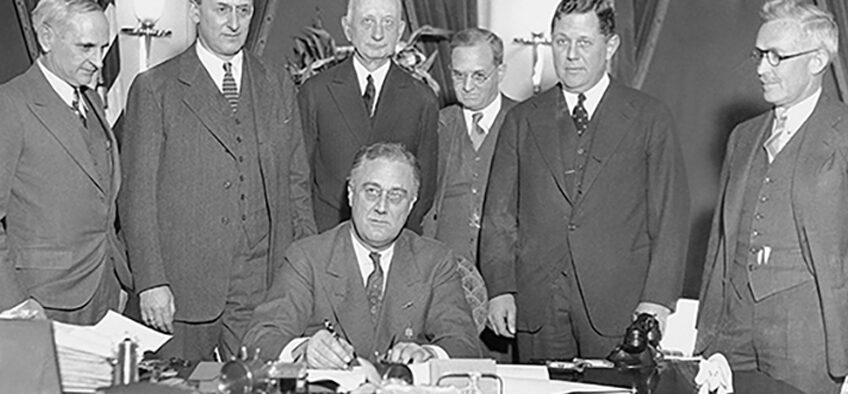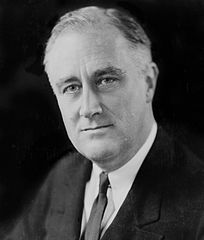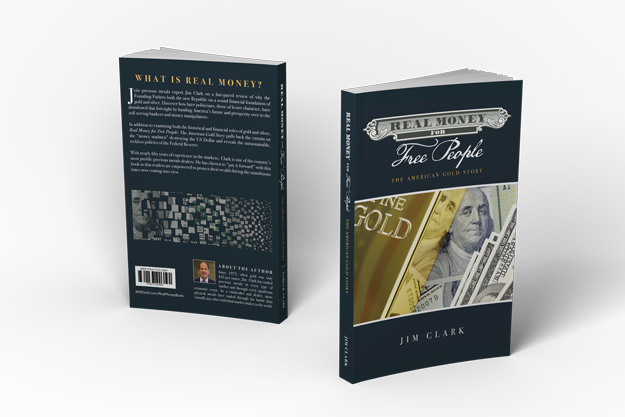
A Dark Day for Real Money

This Tuesday will be 89 Years Since the Government Criminalized Gold Ownership
I, Franklin D. Roosevelt, President of the United States of America, do declare that said national emergency still continues to exist and pursuant to said section do hereby prohibit the hoarding of gold coin, gold bullion, and gold certificates within the continental United States by individuals, partnerships, associations and corporations….
Whoever willfully violates any provision of this Executive Order or of these regulations or of any rule, regulation or license issued thereunder may be fined not more than $10,000, or, if a natural person, may be imprisoned for not more than ten years, or both; and any officer, director, or agent of any corporation who knowingly participates in any such violation may be punished by a like fine, imprisonment, or both.
Franklin D. Roosevelt, Executive Order 6102, April 5, 1933

There are certain dates in American history that deserve to be remembered for events that eroded our Constitutional monetary system. One of those was 89 years ago this week when the US government made it a criminal offense for Americans to own monetary gold.
Our thanks to Tho Bishop at the Mises Institute for his account of this infamous anniversary. Bishop writes:
“The order was one of the several disastrous responses to the Great Depression that succeeded in escalating the financial crisis. Later in the year, the US Congress would pass a resolution retroactively supporting the legislation; however, it was the determined autocratic leadership of FDR that made way for these unprecedented measures. It would be a crime for Americans to hold gold for over forty years until President Gerald Ford reversed the order in 1974.
“This episode has several lessons for the current financial environment, particularly given the acceleration of tyranny-by-expert rule that has taken over much of the worst this past year.

“The underlying legislation that evoked by FDR’s executive order was the Trading with the Enemy Act of 1917—a by-product of World War I—despite the fact that the US was in no way in a period of war in 1932. Similarly, we have seen war on terror–inspired financial legislation increasingly used against American citizens. For example, in the name of “fighting terrorism” the US PATRIOT Act significantly increased know-your-customer laws, empowering federal regulators to use the traditional banking system to better track the economic behavior of American citizens.”
The objective of Roosevelt’s gold grab was twofold: first, to devalue the dollar then and there, and then to get gold out of the way. Gold’s role in the monetary system acted as a brake on the Fed’s expansion of money and credit and the endless growth of the State. It was an impediment to deficit spending that had to go. Gold had to go because it made the individual’s financial well-being dependent upon himself, instead of upon State benefactors and the decrees of the monetary authorities. It was a bulwark against the erosion of property and individual rights. Gold had to go.
Roosevelt’s action was a brazen affront to the free American people and an assault on the Constitution itself.

To this day it reminds us that private ownership of gold is not just a means of protecting our individual wealth and prosperity. It is an assertion of liberty that the founders, great men like Washington, Franklin, Jefferson, and Madison intended for the new American republic.
For a compelling review of America’s money, including the confiscation of gold by FDR and other corrupting incidents that have made possible the return of inflation today at levels not seen in decades, read my new book, REAL MONEY FOR FREE PEOPLE: the American Gold Story.
Speak with a Republic Monetary Exchange gold and silver specialist today, or stop by our office for a complimentary copy.
